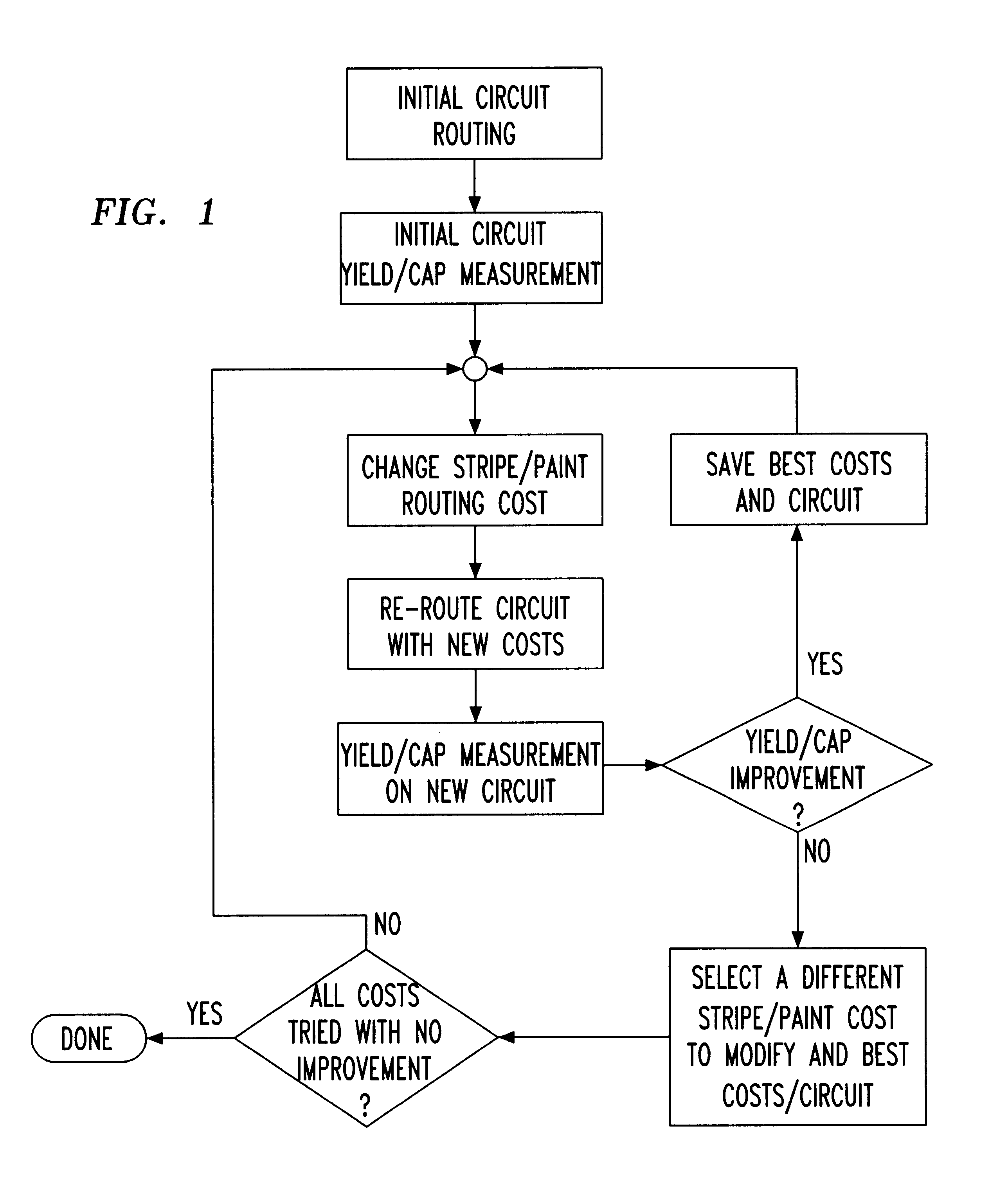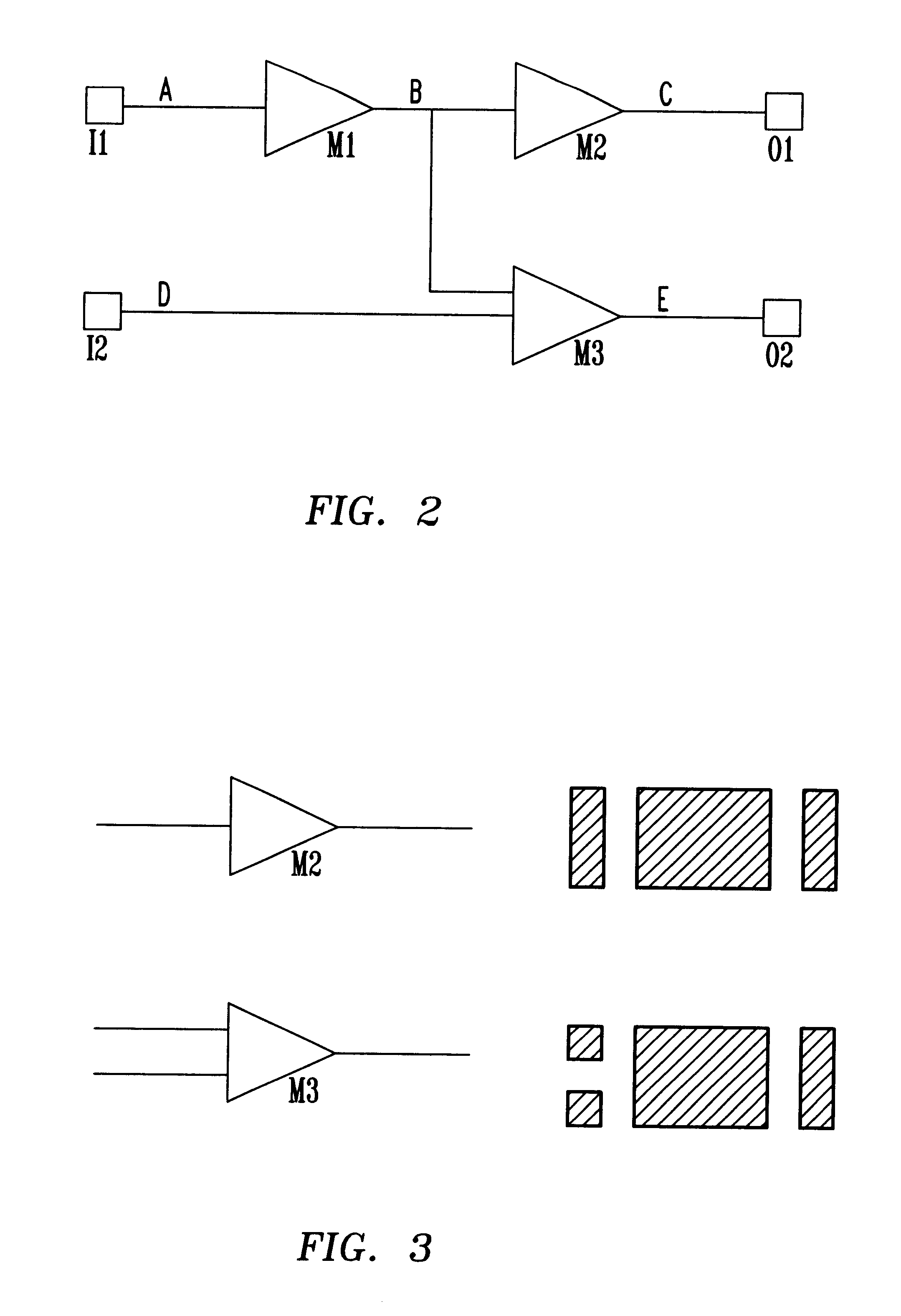Method for improving wiring related yield and capacitance properties of integrated circuits by maze-routing
- Summary
- Abstract
- Description
- Claims
- Application Information
AI Technical Summary
Benefits of technology
Problems solved by technology
Method used
Image
Examples
Embodiment Construction
Referring now to FIG. 2, there is shown a schematic diagram of an IC consisting of cells M1, M2, and M3, two inputs I1 and I2, and three outputs O1, O2 and O3. The circuit consists of net A connecting I1 to M1; net B connecting M1, M2 and M3; net C connecting M2 to O1; net D connecting I2 to M3, and net E connecting M3 to O2. The circuit shown is a logic (or electrical) representation of the illustrative circuit used to describe how the cells are placed and routed.
FIG. 3 shows each cell of the logic configuration converted to a physical design. The shapes depicted are required to manufacture the IC chip. They represent the locations of the pins of each cell which tell the router which of the shapes need to be connected. The physical cells are placed on the IC chip during the placement phase and subsequently wired.
FIG. 4 illustrates the placement of the cells forming the IC chip of FIG. 1. The nets are referenced by I1, I2, M1, M2, M3, O1 and O2. Nets A, B, C, D, and E are shown insi...
PUM
 Login to View More
Login to View More Abstract
Description
Claims
Application Information
 Login to View More
Login to View More - R&D
- Intellectual Property
- Life Sciences
- Materials
- Tech Scout
- Unparalleled Data Quality
- Higher Quality Content
- 60% Fewer Hallucinations
Browse by: Latest US Patents, China's latest patents, Technical Efficacy Thesaurus, Application Domain, Technology Topic, Popular Technical Reports.
© 2025 PatSnap. All rights reserved.Legal|Privacy policy|Modern Slavery Act Transparency Statement|Sitemap|About US| Contact US: help@patsnap.com



